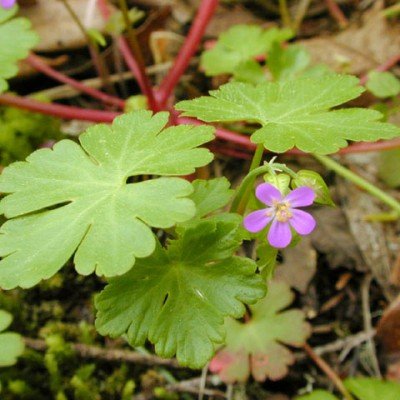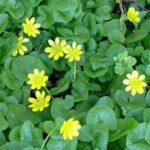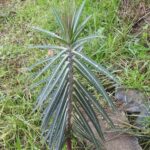While winter is still here, it won’t be long before buds begin to wake up and green plants will start to peer through the dormant winter vegetation. Unfortunately, though, that also means time to watch for early spring noxious weeds to start popping up. Here are a few species that our Cooperative Weed Management Area (CWMA) partners want you watch out for.
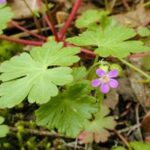
Shiny Geranium (Geranium lucidum) is an annual plant that grows primarily in shady forests. It has bright red stems and waxy, deeply lobed leaves. The flowers are pink and have five petals. They are easily confused with the native dove foot geranium, which has hairy stems and flowers with deeply lobed petals that appear as 10 petals. The seeds are very small and are easily transmitted by boots, vehicles, tools, pets and wildlife, so be sure to brush off after working in infested areas. There are known populations in the Forest Creek watershed, Wagner Creek, and along the main stem Rogue River. If you see this plant, please report it immediately.
Below are a few other noxious weeds to watch out for this season:
Garlic Mustard (Alliaria petiolate) 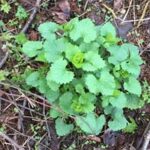 is a biennial noxious weed that can quickly displace native forest understory flora. Its heart-shaped leaves have scalloped edges that give off an odor of garlic when crushed. Each plant can produce up to 5,000 seeds, so it is especially important to remove these plants before they go to seed. Known populations of this species occur along the mainstem Rogue River and lower Applegate.
is a biennial noxious weed that can quickly displace native forest understory flora. Its heart-shaped leaves have scalloped edges that give off an odor of garlic when crushed. Each plant can produce up to 5,000 seeds, so it is especially important to remove these plants before they go to seed. Known populations of this species occur along the mainstem Rogue River and lower Applegate.
Perennial pepperweed (Lepidium latifolium) 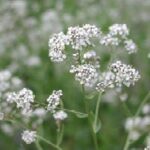 is a semi-woody perennial that grows in a variety of habitats, from riparian areas to roadsides and pastures. The plant can grow up to six feet tall, with many stems emerging from a root crown. It has lance-shaped leaves and dense clusters of small white flowers near the ends of branches. This species has been found near Ashland and at Emigrant Lake.
is a semi-woody perennial that grows in a variety of habitats, from riparian areas to roadsides and pastures. The plant can grow up to six feet tall, with many stems emerging from a root crown. It has lance-shaped leaves and dense clusters of small white flowers near the ends of branches. This species has been found near Ashland and at Emigrant Lake.
Lesser celandine (Ficaria verna) is a perennial plant in the buttercup family that grows in a variety of sites, from damp woodlands to roadsides. It flowers in early spring with tall delicate stalk topped by a single yellow flower. The shiny leaves vary from oblong to heart-shaped. When in bloom, large infestations appear as a green carpet with yellow dots. By June, the plants persist only as an underground system of roots and tubers. These tubers are easily spread by mowing and other forms of soil disturbance. Lesser celandine control is recommended, but not required. Known populations occur in Talent and Central Point.
Mole spurge (Euphorbia lathyrus) is an escaped ornamental herb that has been found along the Bear Creek Greenway. The plant is upright with linear leaves that are bluish green in color. The stems are fleshy and exude a milky latex when cut or broken. It has cup-shaped greenish or yellow flowers. All parts of this plant are poisonous, so please handle this plant with gloves. Like the lesser celandine, control is recommended, but not required.
If you see any of the above noxious weeds, or something you think might be a noxious weed, please report it through the Oregon Invasive Species Hotline.

